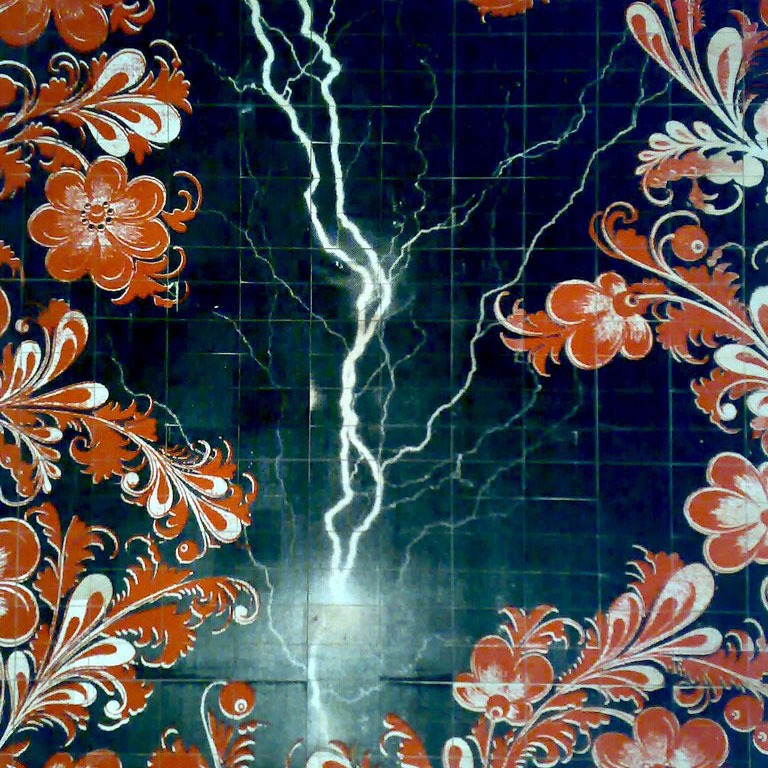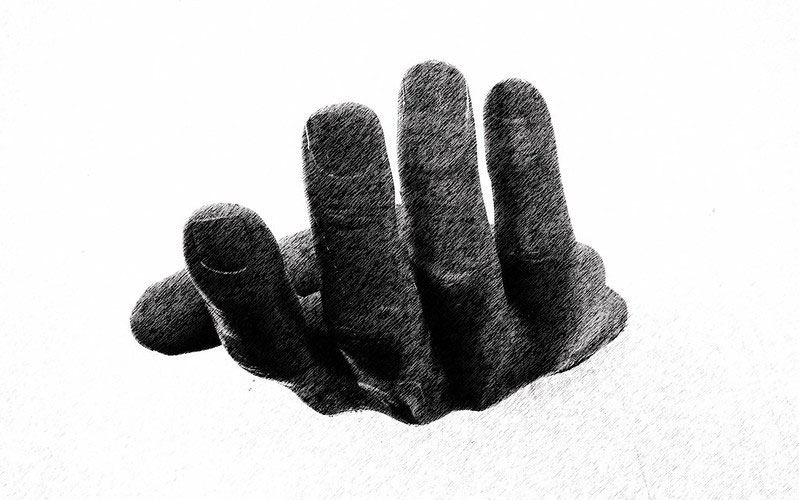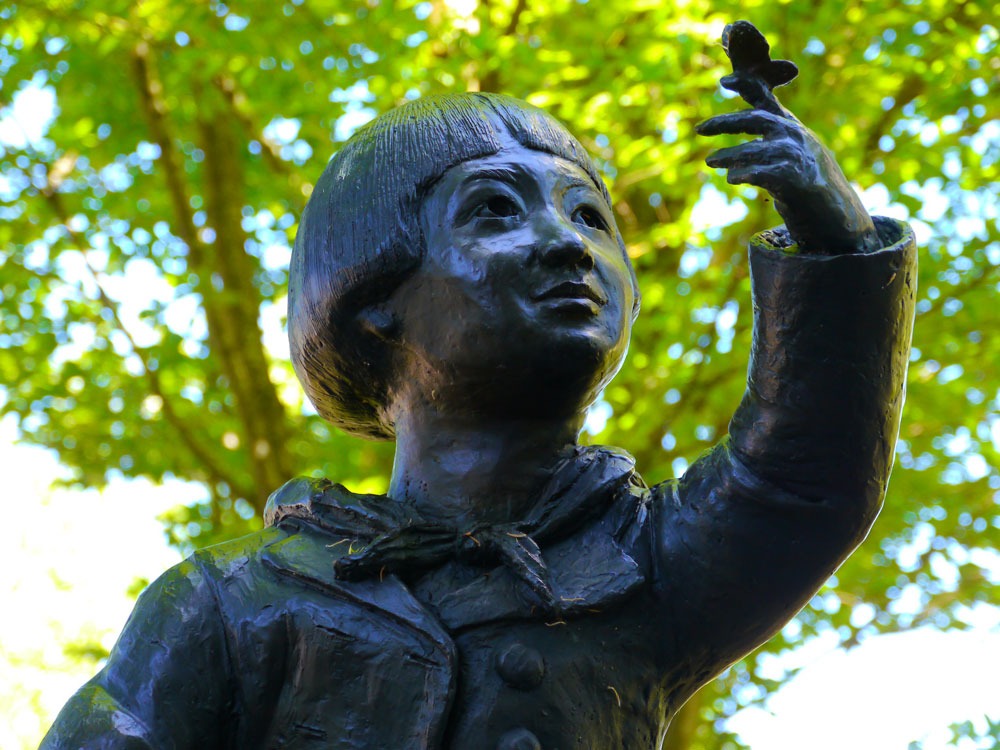The donor who invites you to his hotel room after the gala.
The social investor who suggests you talk shop together over drinks in the hot tub.
The board member who encourages you to dress attractively and flirt at the funder briefing.
When #MeToo, the hashtag and the movement started several years ago by longtime activist Tarana Burke, trended on social media last fall, social justice activists were quick to point out that nonprofits, even those trying to change oppressive systems and problematic behaviors, are not immune from sexism and gender-based violence.
The culture of nonprofit fundraising is particularly ripe for inappropriate behavior because of the unequal power dynamics embedded between donors and funders and those asking for money. Indeed, sexual harassment and gender inequity in fund-raising is enough of a problem for the mainstream Association of Fundraising Professionals to have put out a statement, conducted a survey of its members, and penned articles about it in its industry magazine. It found that one in four female fundraisers have experienced sexual harassment on the job and 65 percent of those harassed said that at least one offender was a donor.
I spoke with multiple people from the social justice sector who recounted experiences they’ve had while raising money, mostly femme-presenting cisgender women of color and white women sharing incidents with older cisgender men, although not exclusively. Most of my interviewees requested anonymity because speaking out may risk their relationships in the sector or risk funding for their organizations.
The stories they shared do not reflect legal definitions of assault or classic quid pro quo (“If you sleep with me, I’ll give you a grant”). Instead, they characterize an industry where women raising money are objectified and expected to pander to wealthy men for the good of their organizations while keeping silent about their discomfort; and where donors do not think they are doing anything wrong. Their experiences affirm what we already know about the rape culture we all live in: it’s pervasive, pernicious, and normalized.
What It Takes to Build Relationships
As fundraisers, we learn and teach that raising money is about building relationships. We know that it works and can often be the most enjoyable part of the job. But it also leaves many of us, especially women, vulnerable when donors and funders take advantage of the common belief that spending more time with them and never saying “No” is what builds relationships. As described by one fundraiser, “You’re trying to attract someone’s attention, engage them, and have them get close to the organization and to you. It’s strategic intimacy—and it can get blurry pretty quickly.” In the social justice sector, we have an understanding that if you’re able to connect with funders and donors beyond direct mail and pitches over lunch, you can then access the influence and funding needed to propel your work to success. Building these types of connections can sometimes look like getting invited to exclusive events or going out for drinks with program officers and high-net-worth donors. As described by one former executive director, “I would see it happening around me—people in social justice leadership playing the game, doing the drinking, and what-ever else is needed.
IT’S STRATEGIC INTIMACY—AND IT CAN GET BLURRY PRETTY QUICKLY.
You go with it and be cool. And if I don’t do this, I won’t be cool enough to make the connection I need. The implication is that this is the way you make these relationships, and once you make the relationships, you can get anything.”
After a discomfiting experience with a program officer, one co-director shared, “A lot of funders want you to homegirl or home-boy them while paying them the respect they think they’re owed. If this was just any man from the community, I would have said something. But I know that this man has the power to take money away from our organization so I just have to take it.”
What’s so insidious and appealing about the process of trying to be friends with donors is that the premise of friendship allows both parties to pretend there isn’t an unequal power dynamic, and to believe that you aren’t there because you want to ask them for money. When comradery makes power dynamics less visible, it soothes the troubled soul of the social justice fundraiser who is uncomfortable with the money dance, and appeases the social justice donor who wants to be seen as more than an ATM. But intimacy between funders and fundraisers doesn’t actually erase the power dynamic; it often just hides the powerlessness of those asking for money and increases the likelihood that they won’t feel comfortable calling out bad behavior.
NO INDIVIDUAL GIVES ENOUGH TO SHIELD THEM FROM THEIR ACTIONS.
The Dynamics of Class, Gender, Race, and Age
The unequal power dynamics that get created when you put a fund-raiser and a donor in the same room are markedly exacerbated when you add significant class, gender, race, and age differences.
Organizations are often encouraged to cultivate major donors who give significant gifts because, unlike grants, they are usually unrestricted and the donor can become a lifetime supporter and champion of your work. What we don’t often discuss openly, however, is how class differences can play out in fundraising, even among people with shared social justice values.
The same former executive director observed, “It’s very possible to have cross-class relationships, but it’s hard to have relationships that start in the dynamic of need. As a young executive director in my 20s, it was my first time having contact with millionaires and billionaires. I was wowed.”
This feeling is echoed by another former executive director. “There’s a real clash of cultures. Flying on their plane, going on their sailboat with them…boundaries become blurry. Because you have access to this person, you feel a lot of pressure to not screw it up and not upset them.”
And when the person raising money has personal experience with the issues the organization is addressing, such as when development staff for a nonprofit addressing homelessness discloses to donors that she was formerly homeless, the inequity of the power dynamic can grow even larger. One former director shared a disturbing account where a wealthy couple tried to “rescue” the member who was raising money from them, offering a very generous donation—the largest the group had been offered from a single donor—and requesting to take the member home with them to “provide them with a safe home.”
Sign up for our free newsletters
Subscribe to NPQ's newsletters to have our top stories delivered directly to your inbox.
By signing up, you agree to our privacy policy and terms of use, and to receive messages from NPQ and our partners.
For women, especially younger women, who raise money from wealthy men, it’s easy—and expected—to fall into gender norms where women are pressured to play up their femininity and attractiveness. Women are expected to perform the emotional labor of keeping interactions fun, pleasant, and attentive regardless of how the man is behaving. One fundraiser shared, “Part of what makes me successful in this role is that I’m polite, kind, and cute.”
This dynamic is also at play in LGBTQ philanthropic spaces. One executive director shared, “We are a sex-positive organization and it can be fun to have a raucous time with your people. But people sometimes assume that they don’t have to be careful about my boundaries about my body and it’s stressful. It’s really routine with funders for physical boundaries to be crossed without consent and sexual solicitation without acknowledgment of power dynamics.”
Multiple people of all genders described a dynamic where they are expected to flirt, are referred to as “eye candy,” are continually touched without consent, and have to deflect requests for dates from donors with a playful comeback and a wink and a smile. There is pressure to provide a sense that they are available to donors, even if it’s just pretense. One person shared that her col-league purposely didn’t disclose that she’s in a relationship while in conversation with (mostly middle-aged white male) donors because she felt it made it easier for them to connect with her.
The co-director shared her frustration with this situation when anticipating what the follow-up meeting with the program officer would look like. “I can’t just go with my knowledge, expertise and organization. I have to figure out how to navigate his advances, what do I wear, who else needs to be with me. It’s ridiculous that I have to even think that way in a social justice movement with a foundation that prides itself on being progressive.”
Writer and facilitator adrienne marie brown put this dynamic into stark relief when she stated, “It feels cool at first. Then you realize that I’m not really part of this party, these are not authentic relationships. I’m part of the spoils that this person wants to have access to as part of the money they’re giving.”
The Impact of Colleagues
For many people I spoke with, the deciding factor of how they felt about their experiences was how their colleagues reacted. Colleagues who believed them, took the incident seriously, and affirmed that no amount of money was worth putting up with this kind of behavior helped people feel supported and safe and more able to move forward.
When Leah Olm, leadership giving officer at Wellstone, told her supervisor that a donor had acted inappropriately with her, the organization took swift action. Their director of human resources met with the donor as well as wrote him a letter stating that he was not to have contact with any Wellstone staff. They stopped soliciting him and did not accept further donations. Leah received support to attend self-defense training and shift how she approached her work to prioritize her safety. “The organization made a choice: no individual gives enough to shield them from their actions,” she shared. “That reinforces the culture of fundraising I’m trying to build here. They had my back in the way that I think we need in this work.”
However, when colleagues made jokes, turned a blind eye, or minimized incidents of harassment and boundary-crossing, the people experiencing such treatment unsurprisingly felt alone and ill-used, and eventually soured on the work. Several people even expressed that these interactions partially fueled their decisions to leave fundraising, to not want to be nonprofit directors anymore, or to leave organizations led by cisgender men.
WHEN MALE DONORS SEEMINGLY EXPRESSED INTEREST IN HER, HER MOSTLY MALE COLLEAGUES WOULD MAKE JOKES FOR HER TO “TAKE ONE FOR THE TEAM” AND “FINANCE THE ORGANIZATION THIS WAY.”
One fundraiser shared that she doesn’t disclose most donor incidents to her executive director, an older man, because she doesn’t think he would consider it harassment. When she did tell him she would not meet with a donor who had groped her, he “understood, but it’s not like he did anything for me or said anything to the donor.” When asked why, she explained, “Your executive sets the tone and he’s not setting a good example. He drinks with donors and says things you shouldn’t say. Folks are following his lead, they see it’s acceptable here.”
One of the former executive directors shared that the complicated combination of both being unilaterally praised for being successful at fundraising while also being derided for it “will do a number on you psychologically and was pretty damaging to my confidence.” When male donors seemingly expressed interest in her, her mostly male colleagues would make jokes for her to “take one for the team” and “finance the organization this way.” It felt most undermining and demoralizing when women she looked up to, including a woman on her board, would echo the same crass sentiments.
Rather than acquiesce to the system and expect her to play along, she described how she wishes her female mentors had supported her: “Brief me on some of the dynamics that might come up. Share how she handles it. Talk with me about how I want to handle it. Support me in however I choose to navigate these things. Say ‘it might get icky but I’ll be here to debrief with you and be in your corner.’”
Transformative Practices
When asked what they considered to be the crux of the problem, the resounding response was white capitalist heteropatriarchy. And for those of us doing social justice work who don’t want to replicate the problem, traditional solutions of calling the police, punishment, and icing people out don’t align. As alternatives, people named several transformative ways we can address the harmful habits that are showing up in our work.
- Name harm and believe people. Staying silent is a survival habit but it doesn’t allow us to thrive. As described by Mily Treviño-Sauceda of Lideres Campesinas, “People who have been abused feel hurt and alone. When we speak up, we aren’t believed, or we’re shamed or blamed.” Creating an organizational culture where people talk openly and feel empowered and supported is critical. After years of experience opening dialogue and talking about taboos, she holds as a central tenet, “We are going to move forward together. Don’t hurry. Listen, be open-minded, be respectful.”
- Prioritize the safety of staff over comfort of the donor. After the 2016 election, Wellstone held an organization-wide discussion on safety and security, which included the fund-raising team. “I don’t go to donor’s houses alone anymore,” said Olm. “I don’t let them drive me places, I don’t tell them which hotel I’m staying at. I don’t wear high heels anymore. For the first time, when we brought on a new staffer, we had a conversation about safety.”
- Approach fundraising with a stronger analysis. Social justice organizations often bring an analysis of racism, sexism, and capitalism to our work and develop organizing strategies to change systems, but are stymied at using that same lens when it comes to raising money. We can be thoughtful and intentional about who in our organization raises money, who we raise money from, and what strategies align with our values. And we don’t have to do it alone. “There are organizations that liberate us from the thought that only wealthy people can fund us, and organizations that get people of wealth to face power dynamics,” offered brown.
- Heal generational and present-day trauma. Taij Kumarie Moteelall, director of Standing In Our Power and former executive director of Resource Generation, shared, “Gender based violence impacts all of us—experiencing it, witnessing it, having it happen in our communities. It shapes us, and when we don’t center our own healing and wellness, we perpetuate it.” To help people begin healing, “We create safe spaces for truth-telling, opening up, and releasing trauma. We explore how internalized trauma and oppression affects how we show up and our beliefs—and we reexamine them to see how we need to shift.”
- Establish boundaries with donors. Said Olm, “Part of the work of organizing donors is establishing boundaries with them. ‘No, we don’t do that, here’s why.’ Part of my job is training donors, interrupting habits, teaching them how to show up in a way that’s better. We have to be serious about building transformational relationships.” Shira Hassan, former director at Young Women’s Empowerment Project, helped lead organizational changes in how they interact with donors after experiencing predatory behavior. This included amending their gift acceptance policy, communicating clear expectations for donors and guests who interact in-person, and having a safety team at all events.
- Know your rights. One organization faced a dilemma when their staff member who was sexually assaulted by a donor didn’t want to engage in any accountability process but the perpetrator kept trying to stay in relationship with the organization. The staff wanted to have nothing to do with this person, and the board was concerned about the organization being vulnerable to a defamation lawsuit if they confronted the perpetrator with the allegations. They sought pro bono legal advice to help them navigate the situation, and, with the help of an attorney, drafted a letter to the donor stating that they were cutting off contact (without accusation) along with a refund of their most recent gift. “Be proactive and seek out legal help,” advised the organization’s director. “You can support survivors and follow your values without leaving your organization open to a lawsuit.”
- See investing in our work as a professional activity. We are taught that the right way to do fundraising is by making it fun, such as throwing a party, serving alcohol, and letting loose. This is not wrong, but it can contribute to a dynamic where boundaries are blurred and power goes unacknowledged. Said brown, “The conversation on the table is that you have money and you’re trying to decide if what I have is worth investing in. That should happen in an office setting. Our culture is to pitch you while you’re toasty. That fundamental set up is flawed and couches it in the wrong kind of exchange.”
- Encourage funders to address inequity in all their practices. Sexual harassment in fundraising is just one way that power gets played out in the philanthropic world. If that feels like a difficult place to start, there are many other places to begin the conversation. Rye Young, executive director of Third Wave Fund, shared, “Sexual assault is part of a larger context of abuse of power and exploitation. As funders, the very premise we operate under is imbalanced and we are likely exploiting this power difference without even thinking about it—like grant agreements where the relationship is defined 100 percent by the funder from the get-go. At Third Wave, we use informed consent processes for multi-year grants. We create regular staff-free spaces so grantees can provide honest feedback. We started reimbursing groups we ask to apply who don’t receive funding to recognize their labor. And we don’t throw away groups or pull funding when mistakes or conflict gets exposed—they should have room to learn, grow, and fail and not be held to higher standards than larger national organizations.”
- Learn from those who have been doing this work. It can be daunting to address the power differentials and there is much at stake if we fail. But many groups, especially those working on the margins, have met with success in the face of formidable odds. Farmworker women, one of the most disenfranchised groups in this country, are doing amazing work with groups like Lideres Campesinas to end sexual violence in the fields. Third Wave Fund, which is led by young people of color and raises all of its money, is pushing the envelope on funder practices. Encouraged Hassan, “Give ourselves room to stay in learning. Be willing to make mistakes and figure it out to get to the next spot. Keep coming together. The answers are coming.”
More is Needed
There is much more to explore about how power inequities show up in our organizations, in the communities in which we’re based, and in the nonprofit and philanthropic sectors. It’s also important to examine how it shows up in ourselves.
Those I interviewed told stories of being on the receiving end of inappropriate behavior, but they also shared that the experience made them more mindful of their own conduct—the times they touched without consent even if it was “just a hug,” the times they made sexually explicit remarks in work settings. And, while many fundraisers I reached out to had never experienced inappropriate behavior and have respectful and authentic relationships with the majority of their donors and funders, we are all complicit in this culture where power is allowed to be abused and inequities allowed to be unchallenged.
Let’s continue to take advantage of the momentum of this movement moment to speak our truth, examine our organizational practices, and create new transformative visions for our work. ■
Priscilla Hung is co-director of Move to End Violence, a capacity-building initiative of the NoVo Foundation to support the movement to end gender-based violence. She sits on the editorial board of the Journal.
ADDITIONAL RESOURCES
- Association of Fundraising Professionals poll results: philanthropy.com/interactives/fundraiser-poll
- Creative Interventions Toolkit: A Practical Guide to Stop Interpersonal Violence using community-based interventions: creative-interventions.org
- Just Practice Collaborative provides training and resources on restorative and transformative processes: shirahassan.com/just-practice- collaborative














